HIStalk Advisory Panel: Best Ways for Vendors to Engage Hospital Leadership 7/18/12
The HIStalk Advisory Panel is a group of hospital CIOs, hospital CMIOs, practicing physicians, and a few vendor executives who have volunteered to provide their thoughts on topical industry issues. I’ll seek their input every month or so on an important news development and also ask the non-vendor members about their recent experience with vendors. E-mail me to suggest an issue for their consideration.
If you work for a provider organization (hospital, practice, etc.), you are welcome to join the panel. I am grateful to the HIStalk Advisory Panel members for their help in making HIStalk better.
This report involves these questions, submitted by a vendor CEO. What are the most effective ways you learn about products and companies? What advice would you give that CEO about using his salespeople and other resources effectively to explore areas of mutual interest with hospital IT decision-makers?
What are the most effective ways you learn about products and companies?
- HIStalk for one. HIMSS is another.
- HIMSS national and local chapter meetings. Peer suggestions. Company website review. Google searches. Healthcare system / physician leader blogs. If I am still interested in learning more, then, and only then will I contact the vendor.
- #1 HIStalk (kudos to you and your team – indispensable!) #2 HIMSS and other more specialized expos. #3 Occasionally through listservs and other blogs I follow.
- Internet research if I am looking for a particular service or product. Trade shows if I am interested in what’s new on the market.
- I read a lot. As problems arise or as I see something that piques my interest, I will contact a local partner to see how we get more info. White papers are a good thing and healthcare-specific press is good, too.
- HIStalk, of course! Really, nice capsule summaries from blogs are more effective than glossy brochures, webinars, or other such efforts to snag my time.
- CHIME’S CIO Fall Forum offers vendor access to many CIOs and other key resources through their program to engage through small groups forums. These sessions often are around how to market a new or different service or how to package a product. They are also good lead generation tools. Similarly, regional HIMSS and similar meetings, relationships with other vendors to offer a solution to a problem that crosses disciplines, can be effective. Sales cold calls either in person or by telemarketing are at best an irritation and at worst a total turn-off. E-mail is little better. I do look at sponsorship of HIStalk as a positive. The absolute best is a CIO acquaintance testimonial.
- This is tough. There is so much noise you have to figure out a way to rise above it. A box in the mail always attracts my attention – I know it’s shallow, but it works. I get 100 junk e-mails (that get through my filters) every day — e-mail doesn’t work any more.
- Honestly, I find out about companies through your blog. Not through the ads, but through the notice of implementation. I’m a buyer rather than a shopper, so I’m more likely to look at a product that has mentioned several times. Also, I don’t go looking for something until I need it – again, a buyer mentality rather than that of a shopper.
- From my staff. Vendors often want to get right to the CIO or the CEO, but mostly we block these cold calls. Get someone on my staff excited about something and they can get to me.
- Several recommendations. First, ensure you take time to learn about the provider organization… key clinical / business challenges as well as the current landscape of IT priorities. Nothing more annoying than a vendor who shows up and asks, “What are your challenges?” Second, ensure proposed / new product / service has a fit – innovative ideas that create real value for patients, offer a true opportunity to enhance operating margin. We’ve heard the other pitches before and are overwhelmed with folks offering EMR skills, offering to “outsource” our data center or application teams. Nothing new there. We want to hear the new, innovative ideas, and don’t be shy about telling us where in the development cycle something is. If it’s new and we’d be the first to implement, just let us know upfront that you’re proposing more of a partnership.
- I pay attention to CHIME and HIMSS updates. I read all updates from Advisory Board and Healthcare IT News. The problem comes when I need a specific solution and have nowhere to turn. I know it is out there somewhere, but where? It is kind of like the red car syndrome — when you buy a red car, you suddenly see them everywhere. When I need a solution, all of a sudden I pay attention to the direct mail campaigns that bombard me. Most of the time they are irritating and quickly discarded, but always at least looked at from a cursory perspective.
- Beside HIStalk? Word of mouth, other CMIOs.
- CHIME sessions, introductory 1:1 meetings, regional seminars.
- By researching on my own, speaking with peers, or working with my colleagues. Have to start with a business issue or need realized throughout the organization first.
- Whatever they do, don’t cold call me. Trade shows are not bad as long as there is an introductory e-mail or mail piece sent ahead of time. I also like the vendor speed dating events, as I can learn more in 15 minutes of focused time with a company than any other way (effectively).
- Often word of mouth from colleagues. Occasionally at a show like HIMSS. I do like HIStalk’s interviews and reviews on HIStalk Mobile because they seem to be more candor than fluff.
- Websites such as HIStalk, Information Management Direct, Data Governance Institute, etc. White papers, with real case scenarios not fluff, distributed via websites.
- I learn from reading blogs like HIStalk and in talking to friends at other practices (most of those opinions are very negative).
- Throwaway magazines. Word of mouth from other CMIOs. News articles. Meetings (e.g., AMDIS). This is obviously not a great system, but it’s true.
- Trade shows and conferences. The exhibit floor is a great resource, as are the networking events.
- Reading stories about their success. Conferences.
What advice would you give that CEO about using his salespeople and other resources effectively to explore areas of mutual interest with hospital IT decision-makers?
- We have a local HIMSS meeting once a month that is always looking for a sponsor. A local EMR user group is always looking for a sponsor also. Another way is to figure out a way to get to the IT staff and have them sell it to the boss. Instead of trying to get on that CIO calendar or get through that CMIO door, network until you find the lead tech or application person and sell them first. The "C" folks have people beating down their doors and free lunches galore. A little attention to the folks in the trenches can go a long ways.
- I have to go back to HIMSS and other ways of getting in the door without taking time out of their busy schedule. It is not easy and it is getting harder, so you have to be open to thinking outside the box. A "lunch for the IT staff" like the clinicians get every day. How about free education combined with selling?
- Get to the point. What exactly does your system do and how does it avoid my pain? And Dear Lord, skip the buzzwords of industry-leading, complete platform solution, etc. I can’t tell you how many product descriptions I’ve read in entirety and still had no
idea what they did. Videos take too much time – don’t bother. The message has to be something that can be delivered in a quickie pitch, single e-mail, single web page, etc. Provide more info if desired, but any extra required steps puts off that many more execs. Possibly ask for a simple e-mail address but not much more. - First, understand our business and local relationships. Second, DO NOT cold call or e-mail requesting to introduce yourself. I rarely read or listen to the entire message and immediately delete. I do not have time to participate in “fishing expeditions.” Third, get involved with local tertiary organizations (sponsorships) and events. You first have to establish a relationship, then understand us before we will then seek to understand you or your company.
- Fairly simple: ask what problems they want to solve. Don’t offer a solution and try to find a problem it can solve. Be prepared to not see an immediate ROI or anything and at the same time be ready to experiment with a few new areas where you might not see the payoff.
- As someone in the same shoes as this CEO (i.e., a vendor), we’ve been lucky in that we can typically get in the door for a brief conversation based on our benefits of revenue enhancement and similar “hot button” issues that are top of mind for them. That said, given they are incredibly busy and operate at broader stroke level, once you’re in, your team will need to deliver your message very clearly and succinctly in a way that they can grasp the concept and benefits quickly and basically make the decision your solution is worth pursuing or at least exploring further to get it to the next step or person who’ll dive deeper. We’ve been very successful with this model. a. Internet research if I am looking for a particular service or product. Trade shows if I am interested in what’s new on the market.
- I could write a book on this topic. It’s more about what not to do. Here are a few suggestions. (a) Respect the CIO’s time. Whether its voicemail or e-mail, get to the point quickly and tell me how you are going to solve my problems and intrigue me enough to contact you. Of course to do that you need to know something about my organization, so do your homework on me and my organization before contacting. If you can find out what keeps me up at night and provide a solution, I’m all in. We constantly live in fear of something. Find out what that is or convince me I should be afraid. (b) Find someone who knows me. You’ll have a better chance if a trusted colleague introduces you. (c) Do not sell to users or go over the CIO’s head. Most CIOs have big egos, so this is a non-starter and will only tick them off. (d) Try starting lower down in the IS organization. Most CIOs will listen if a subordinate leader feels that CIO should meet a particular vendor. (e) Offer a free trial or some sort of risk-sharing proposal. If I know you are offering to put skin in the game, I am more likely to listen.
- I know I don’t meet with new vendors often. I don’t listen to cold call voice mails and don’t really read spam e-mail. It has to be through a mutual contact or something I am looking for if I am going to talk to a new vendor. The best way in is through partners or resellers. All IT departments have them and they work closely with the management team. That is the best inroad to the department. Local HIMSS groups or industry groups like that would be a great way in also.
- The cold call approach will not work. The cold e-mail approach won’t either. Finding a method that can present a forum for general questions, before any specifics are identified for commonalities, is most productive, and lets me weed out those with whom I can find no area(s) worth pursuing.
- No hard sell. Solve a problem for me and be respectful of my time and the organization’s limited resources.
- From a vendor perspective, direct access to the C-suite is difficult. In many cases when you do get access, you have a very small window of time to make an impression. If that C-level doesn’t have what you are pitching on her radar at that particular moment, your chances of progress are greatly diminished. What I have always tried to do, and coach our sales people to do, is become part of the community in which we sell. Participate (not just join) in organizations that support the local medical delivery area. Attend meetings and offer to speak about subjects (not a sales pitch) that interest the participants. Help make connections with other executives. Get to know the executives and let them get to know you as a person who is helpful and a thought leader. Once something appears on their radar that you can help with, the chances are pretty good they will remember you and reach out. It sounds like a really slow way to build a pipeline, but that is not the point. Opportunities happen every day, and if you are connected, you will find them by being a known quantity. Executives in any market leverage their network of contacts and associates to get things done when they need it. Healthcare is no different. The best sales people I know are those that build the best relationships. Nobody really sells ice to Eskimos.
- We almost all participate in some kind of association. HIMSS is obviously the big one, but there are local organizations that offer more meaningful networking opportunities. This is where the vendor needs to hire experienced people. They already have the relationships established.
- Offer white papers and case studies. Please don’t call me or send me e-mail because I will just delete it. Don’t call, because I won’t call you back. Partnering with a customer to present a Webex of a business problem that they solved together is appealing.
- Google. So much about our organization is in the public domain. Look at a map—see what hospitals are close to us and then investigate what they are doing. Chance are good that we know and care about our competitors.
- Set up a focused briefing with multiple decision-makers in the room. Nothing is going to happen without CIO insight, consent, alignment. We have found, however that briefing sessions, if well-coordinated and with the right IT and clinical resources in the room, are a good use of time. Education for the provider team plus exposure to the right audience for the vendor. In a large provider organization, what’s not effective is having lots of one-off conversations with local hospital folks. Understand the provider’s governance and decision-making process.
- Make the investment to attend conferences. At these small conferences (IHT2 ,for example, in Fort Lauderdale a few weeks ago) I spoke to every vendor there. It was a good event.
- I would see it as an iterative process. You get one customer, give them a good deal, use their story (and people) to get the next, larger, bigger name customer, and repeat. Write articles for blogs, "throwaway" journals, newsletters. If your niche is small, a well-titled article in a throwaway will catch my eye. I can delete about 100 unsolicited e-mails a minute and my secretary doesn’t take cold calls. It would be sneaky, but you could get your first CMIO (your first customer) to go to the appropriate meetings and shill.
- The least-effective way is the cold call—can’t delete those fast enough. HIMSS has lost its charm for me, so a booth in the nether regions of the exhibit hall is not a good use of limited funds IMHO. A short, well-written e-mail that clearly identifies the problem the vendor is seeking to solve with a link to a web site/demo video is often an effective first encounter. An article in one of the trades can be a good route too. Obviously, the best answer is to network and know the potential customer’s situation and needs. AKA, targeted marketing.
- Work with someone in the industry such as an ex-CIO who can open doors for 1:1 intro meetings or small group events in local markets with a select group of CIOs to discuss the product offering in an intimate, non-high pressure environment.
- It is not easy for salespeople to reach me – that is by design. I get more cold calls than I can care to listen to and delete voicemails as soon as I realize it’s an unsolicited call. As much as it can be irritating to me and the rest of the IS department, it’s best for vendors to connect with the business units that may benefit from their offering. I look at the IT role as one of guidance and support. We can run a project, crunch numbers, negotiate contracts, evaluate technology, etc. We aren’t the ones to evaluate the true business need, but we can lead our internal customers through the process of evaluation.
- There needs to be a compelling reason for me to become educated on the product and to see if it fits a need that we have. Sales is tough. Getting in front of a CIO is tougher. And going around IT to get the message out if it is a tech play is the kiss of death. Companies have to be patient, too. Just because you have the greatest thing since single malt scotch does not mean we are ready to consider it.
- Every CMIO and CIO these days is totally deluged with requests from all kinds of vendors, large and small. It’s overwhelming, and almost impossible to determine who is selling a useful product. To be honest, I rarely make time for salespeople any more. I’m more likely to talk to a company CMO or clinical resource if they reach out to me.
- We are busy and don’t have time for drop-in or sales calls. Sending information i.e. white papers is an easy way to generate interest. Have one or two current users present when you attend or present product at local / state / national meetings- they can give real life examples of why the product is good.
- Cold calls are never good – best to leverage if some kind of relationship to the company already exists or leverage a conference where leaders are there to be looking at other vendors and technologies. Larger health systems are increasingly placing emphasis on ‘vendor management’ departments within IT and working through this groups can be useful since they are usually involved in determining partner vendors and vendor selection processes.
- Acknowledge to me that you understand that I’m busy and that I may already have the equivalent of what you are selling (at least I think so). Offer to look at what I already have to see if there’s ways that you can help me. If no, say so, retreat and fight another day. Don’t ask the CMIO about things that are the CIO’s realm and vice versa – nothing I hate more than when a vendor has talked to my CIO about systems that impact clinicians without talking to me first or talking with us together. If you’re talking to a CMIO or CIO in a hospital system, don’t go directly to the docs or to individual hospitals – that’s a real no-no.
- My number one rule is that all messaging from sales to CXO level needs to be focused on the business issues of the CXO and their organization in their market. Not focused on me, the vendor, my cool product, my cool customer base, my cool technology. Cut out all the buzz talk, marketing speak, tech speak, and really study the provider and their town. Who are their competitors? What is their market share? What are their financials like? What do their physician customers and patient customers think of them?They need to open their conversations with a provocative message that shows they have done their homework and know the business. Let that conversation flow until the customer says, “Hey, can you help me with that issue?” Salespeople need to be customer experts, not product experts.
- This is an interesting question in that the answer has changed drastically in the last five years. It used to be easier to engage with management, no matter how busy, because it could be done after hours – dinner, a sporting event, drinks. Now, however, more and more facilities have purchasing guidelines in place that prevent employees from taking anything from vendors, including meals. This means that all meetings have to take place during already jam-packed days, resulting in fewer opportunities to build relationships. It has become more of a 15-minute elevator speech opportunity rather than a relationship-building opportunity. Because of that, an effective plan seems to be: e-mail contact, phone contact, correspondence through e-mail with questions and answers, in-person meeting, follow-up information through e-mail and calls. Much less personal, but still effective.
- His salespeople better know his clients really well.










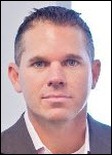
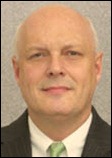
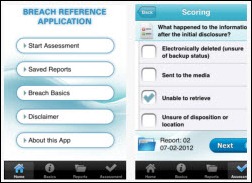





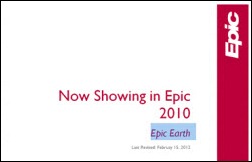


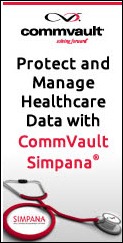




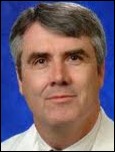
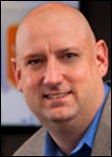


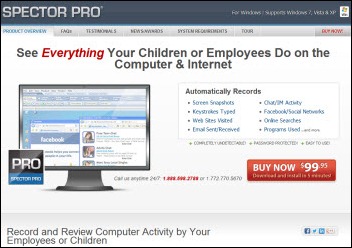


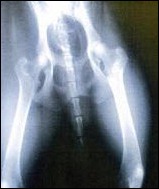



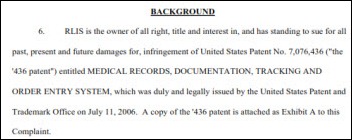



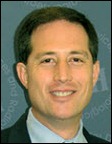









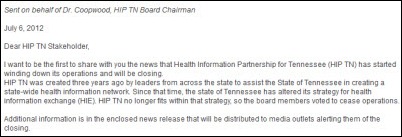





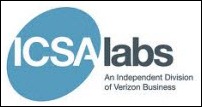














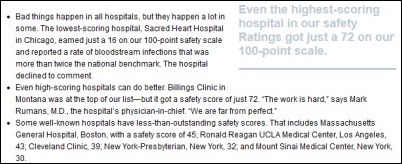

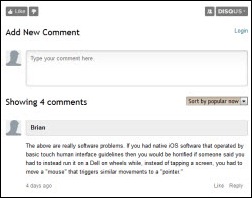

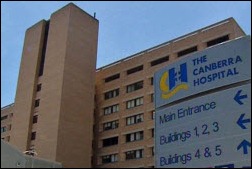






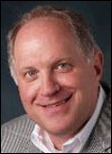
![7-3-2012 6-42-48 PM_thumb[1] 7-3-2012 6-42-48 PM_thumb[1]](http://histalk2.com/wp-content/uploads/2012/07/7-3-2012-6-42-48-PM_thumb1_thumb.jpg)






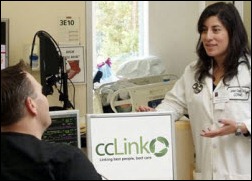


I dont think anything will change until Dr Jayne and others take my approach of naming names, including how much…